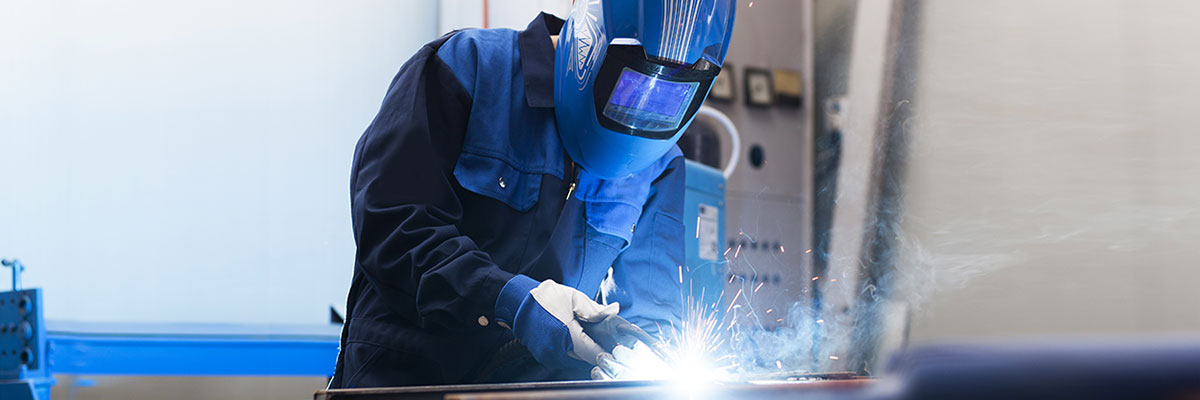Hot Work Safety Procedures

“Hot work” is work that generates heat, hot sparks or open flame, which is capable of producing a source of ignition that can ignite flammable materials and/or represent a fire hazard. It most commonly refers to activities such as welding, torching, brazing (e.g. soldering), cutting or grinding.
Hot work is necessary for some construction, maintenance and fabrication activities, such as metalwork and pipefitting, torch-applied roofing and machinery repairs.
Hot work safety
The purpose of TMU’s (google doc) Hot Work Program (external link) is to provide guidance that helps protect the health and safety of university community members who perform hot-work activities in TMU-owned facilities or grounds. This program describes the procedures to control or eliminate the risks of fire or explosion as a result of hot work.
This program is intended to comply with the following regulations and guidelines:
- Ontario Occupational Health and Safety Act, R.S.O. 1990 (external link)
- Ontario Fire Protection and Prevention Act ,1997, S.O.1997, c.4
- Canadian Standard Association Standards
- CSA-W117.2-12 (R2017) Safety in welding, cutting and allied processes
- CSA Z94.3:20 Eye and Face Protectors
Hazards of hot work
Hot work carries some risk to the personal safety of workers who are conducting the hot work, including:
- burns from flame, sparks or hot surfaces
- inhalation of toxic smoke and fume
- injuries to the eyes from UV radiation exposure
- injuries related to accidental fire
- electrical hazards
Hot work also poses risk to the surrounding environment that is exposed to the hot work:
- fire from sparks igniting combustibles
- heat damage (melting, burns or fire)
- explosion
Hot work requirements and processes
Hot work may or may not require a Hot Work Permit (external link) to be conducted on campus.
A hot work permit is not required for working in designated areas and the following activities:
- Bunsen burners in laboratories
- Fixed grinding wheels
- Electric soldering iron
Designated areas are approved locations that are fire-safe and specifically set up for performing hot work activities (e.g. a welding shop). For a location to be approved as a designated area, it must:
- be equipped with mechanical ventilation to control smoke and fumes
- be built using fire-resistant and non-combustible materials
- not contain any combustible or flammable materials
- be suitably segregated from adjacent areas
- be equipped with necessary personal protective equipment (PPE) for hot work
- be equipped with an appropriate fire extinguisher, e.g. type 4A:40B:C.
Below are some designated areas on campus which are exempt from obtaining a hot-work permit. However, the (google doc) hot work procedure checklist (external link) and this (google doc) Hot Work Program (external link) requirements still apply.
- Creative Technology Lab Basement (welding shop) - DCC
- Civil Engineering welding shop - ENG
- Theatre Workshop - KHW
Hot work permit is required for all hot work outside of the designated areas (e.g., occupied or public area, or any torch work completed on roof tops, and welding of railings), and where the fire protection (fire detection or fire suppression or fire alarm pull station) system has to be bypassed and all contracted work.
Fire Protection System Bypass Procedure
To conduct hot work that generates smoke, heat and/or fumes it is sometimes necessary to temporarily bypass fire safety control systems to ensure that smoke and fire suppression systems are not activated by the work. A (google doc) Fire System Bypass (external link) permit is also required and an active fire watch is required when hot work is performed or when the fire system bypass affects unobserved spaces.
Ventilation
Adequate ventilation, which may be natural or mechanical (dilution or local exhaust) ventilation, shall be provided for all welding, brazing, and allied processes.
There are three types of local exhaust ventilation systems used for welding, cutting, and allied processes:
- a welding bench with a fixed hood;
- portable hood with flexible ducting; and
- a fume extraction gun or gun attachments with flexible ducting.
Personal Protective Equipment (PPE)
An operator involved in welding or burning operation must wear the following PPE:
- Face protection meeting the CSA Standard Z94.3, such as:
- a welder's helmet fitted with a filter shade that is suitable for the type of welding you are doing to protect your eyes from welding light if arc welding, plasma arc cutting, gouging or welding with a filter shade appropriate for the work
- goggles or safety glasses with side shields, when chipping or grinding a workpiece if you are not wearing a welding helmet.
- Insulated, flame resistant gloves that extend to cover the arms and are capable of providing protection from electric shock by the welding equipment.
- Rubber-soled safety shoes to protect against electric shock and burns
- Respiratory protection should be used when engineering controls are not sufficient to remove welding fumes
- Flame-resistant clothing such as aprons, flame-resistant capes, shoulder covers or equivalent.
- Flame-resistant hearing protection if the work will generate significantly high noise levels.
Contact us to schedule training
Supervisors and hot-work operators must be trained on this program and its procedures. Refresher training should be completed if changes are made to the program requirements or procedures.
Contact ehs@torontomu.ca for consultation on hot work procedures, program training and requirements.